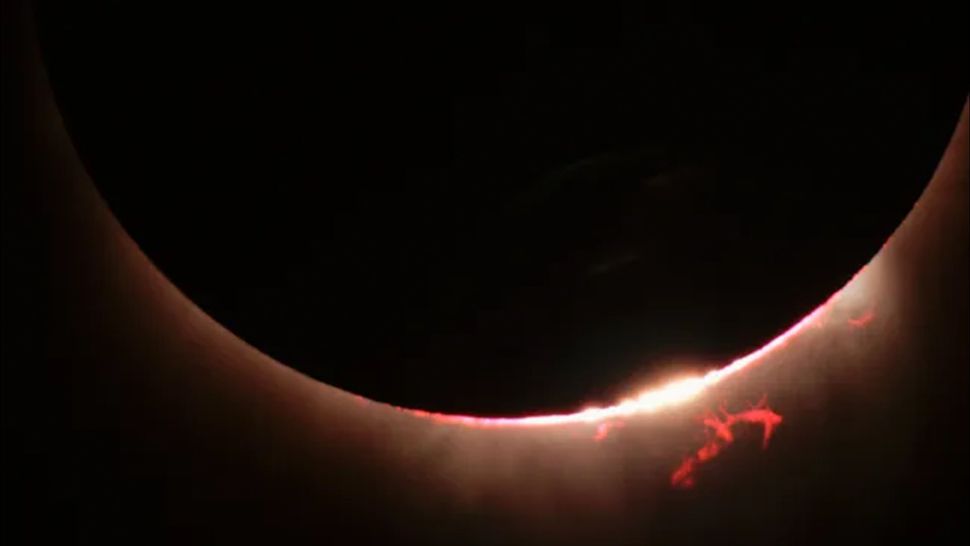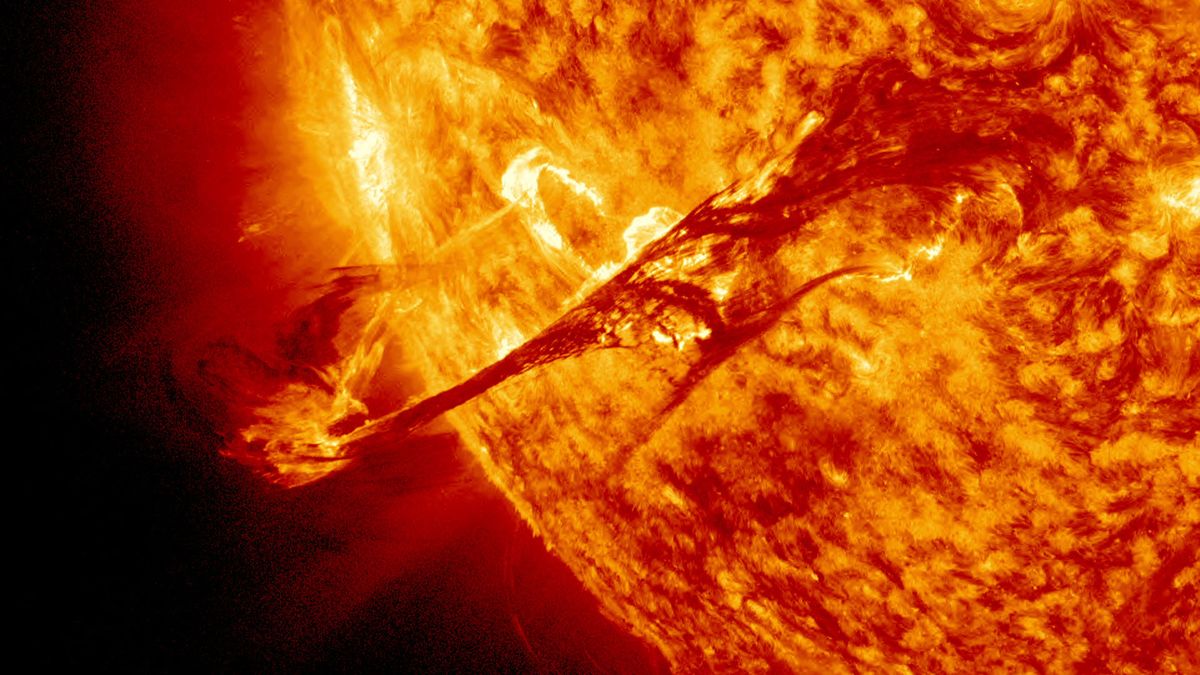Enormous explosions may be visible on the sun during the April 8 solar eclipse
By Jamie Carter( space.com ) published 9 hours ago
When the moon fully covers the sun on April 8, viewers will have a rare view of the sun's corona, and everything that explodes out of it.

A close-up of the sun's disk during a total eclipse reveals fiery solar prominences. (Image credit: Roger Ressmeyer/Corbis/VCG via Getty Images)
If you're in the path of totality for the April 8 total solar eclipse, you'll experience a brief period of darkness — totality — for a few seconds or minutes. This is the only safe time to look directly at the sun without solar eclipse glasses. If you observe the sun's corona during totality, you may see dark-pink towers and loops of electrically charged plasma stretching many times the diameter of Earth into space. During the last total solar eclipse, in Australia on April 20, 2023, these "prominences" were spectacular — and vast.
These prominences will almost certainly be on show during totality in North America on April 8, because the sun is likely at the peak of its 11-year solar cycle, known as solar maximum.
Prominences can be visible for days — you can look at them anytime you want, if you use a hydrogen alpha telescope — but there are a couple of other rare phenomena you might be able to witness during totality. Here's what solar activity to look for during the total solar eclipse.
Coronal mass ejections

A coronal mass ejection blasts over billion tons of matter into space.
(Image credit: NASA/Goddard Space Flight Center)
One such phenomenon that might be visible is a coronal mass ejection (CME).
"If we get lucky, a CME will present itself as a twisted, spiral-like structure, high in the atmosphere in the sun," Ryan French, a solar physicist at the National Solar Observatory in Boulder, Colorado, and author of "The Sun: Beginner's Guide to Our Local Star (Collins, 2023), told Live Science's sister site Space.com. A CME is a huge ejection of magnetic field and plasma mass from the sun's corona. It moves fast but looks stationary over a few hours.
More:
https://www.livescience.com/space/the-sun/enormous-explosions-may-be-visible-on-the-sun-during-the-april-8-solar-eclipse

